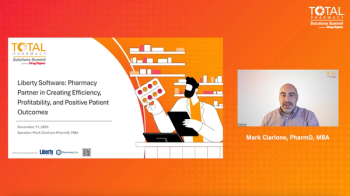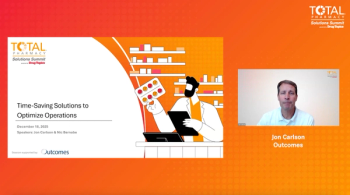
Addressing Burnout in Pharmacy
The causes of burnout in pharmacy are multifactorial. The solutions need to be as well.
Pharmacy is a rewarding career. Pharmacists provide much-needed access to health care for people living in care deserts and they keep people safe with vaccination services. But as helpful and as important as the job is, burnout is still a fact of life for many pharmacists.
Even before the pandemic, burnout in the profession was on the rise. A 2019 workforce study1 found that 71% of practicing pharmacists reported workload as high or excessively high, and studies since the beginning of the COVID-19 pandemic have found that burnout has increased, with some finding 35.9% had increased workload, 52.2% worked overtime, and challenges like patient incivility.2
The stressors that drive this burnout may include long professional hours, harassment and demands from patients, insurance issues like prior authorizations, and staffing shortages. The effects of burnout can lead to dispensing errors, low morale, and high staff turnover. Difficulty in concentration, changes in appearance like being disheveled or tired, and changes in behavior, like canceling appointments or running late are also common.
Two stressors that may have been exacerbated by the COVID-19 pandemic: reimbursement and public perception of pharmacy. Patients visit their pharmacist for multiple reasons, but staff shortages can cause delays in prescription filling, testing, and vaccinations, which can lead to fractious encounters between pharmacy and patient. On this issue, Tonya Shackelford, clinical pharmacist and senior manager for Product and Solutions Management at Cardinal Health said, “Independent pharmacists have a serious job filling prescriptions and ensuring their patients get the right medication with no harmful drug interactions, and that is on top of running a business. As pharmacists get busier during the day, there’s the added pressure of making sure mistakes aren’t made that could potentially hurt someone. This just adds to pharmacists’ burnout.”
The decline in reimbursement is one of the leading factors that led pharmacies to include clinical services to make up revenue, which has led to increased burnout among pharmacists.
To address this issue, pharmacies may consider 4 important ways to manage burnout:
- Ensure that all pharmacy staff are working at the top of their license, as this can help optimize workflow and promote job satisfaction
- Look at resources provided by organizations to mitigate burnout
- Utilize burnout prevention strategies
- Consider solutions that can increase revenue and improve efficiency at the same time.
The American Pharmacists Association and National Alliance of State Pharmacy Associations have developed a safe, anonymous space that allows pharmacists, pharmacy technicians, and student pharmacists to share both positive and negative work experiences in their pharmacy.
One step to help prevent burnout is through creating and maintaining a work environment that is supportive and positive—which includes promoting fairness and equity in decision-making. Creating a safe space where employees feel like they can speak openly about any concerns is also important and can be a part of encouraging active participation in the organization’s decision-making. Ensuring that what an employee expects is in line with the pharmacy’s expectations can reduce frustrations, as can offering appropriate rewards for employee achievement. Also, it may seem simple, but workloads that offer a chance to rest and recover are also an important way to prevent burnout.
Increasing workflow efficiency can be as simple as using a digitalized workflow like Cardinal Health’s
Burnout isn’t going to go away overnight, but, “the good news is that there are different solutions that could help independent pharmacists relieve stress,” said Cheri Schmit, clinical pharmacist, Pharmacy of the Future Clinical Team at Cardinal Health. “Solutions for scheduling, point-of-care testing and medication therapy management can help bring in more revenue, which would support more staffing and help bring in new technologies that can reduce burnout. Pharmacists should be looking at solutions to expand their operations outside of just filling prescriptions.”
References
1. Bakken BK, Winn AN. Clinician burnout during the COVID-19 pandemic before vaccine administration. J Am Pharm Assoc. 2021; S1544-3191(21)00164-3 doi:10.1016/j.japh.2021.04.009
2. Johnston K, O'Reilly CL, Scholz B, et al. Burnout and the challenges facing pharmacists during COVID-19: results of a national survey. Int J Clin Pharm. 2021;1-10.
Newsletter
Pharmacy practice is always changing. Stay ahead of the curve with the Drug Topics newsletter and get the latest drug information, industry trends, and patient care tips.











































































































































































































